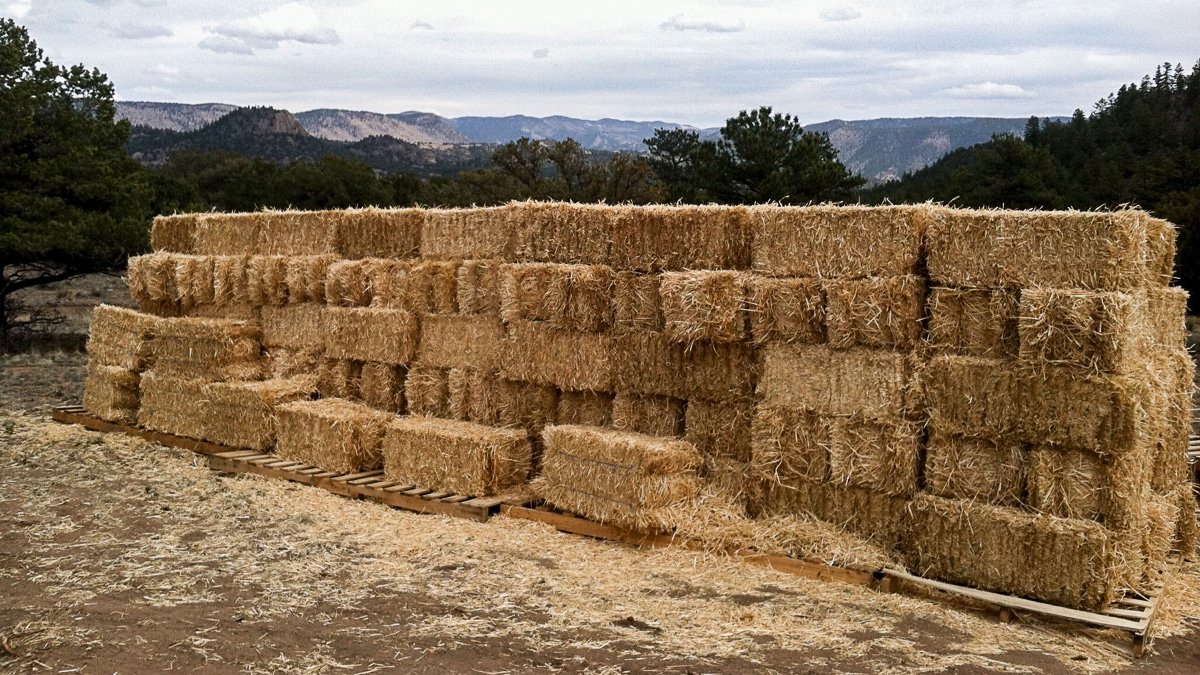Hay Houses Are NOT Straw Bale Houses: Why it Matters So Much
Here is a quick primer on the subject sparked by the following email I recently received. Thanks Josh for the question. This may be obvious to some, but I am no longer surprised by how many people have this very same question. I often hear people use the wrong name for this technology.
I hear them talk about hay bale construction or strawbail. The misspelling I can deal with, but the inclusion of hay in the idea of home construction is a problem. It's straw bale houses, not hay bale homes.
In fact, I even heard a builder, claiming to be a straw bale builder, describe his model "hay bale house" when I spoke to him at his booth at the Green Building Expo in San Francisco last year! YIKES!!!
I hope that the builders out there know the difference and understand the importance of working with straw. For those many others who have the same question, here's the breakdown. Actually, here's the original email question first, then the breakdown.
Josh wrote:
I'm sorry to ask such a simple question but I would really appreciate it if you would explain (on your blog or in a reply email to me) why exactly you cannot use hay to build with. I have ready access to a LOT of hay that is the same price or cheaper then straw in my area. I would like to use some to build a few small structures but I cannot seem to find much information at all about hay. I have read the available information and thus have had some very simple answers but I'm curious if you would provide a relatively thorough answer to the hay vs straw debate. I need it cleared up so I can share the information myself!
Thank you very much!
btw - I'm subscribed to your blog and love it!
Here's my response:
Hay bales are a food source. That is the first and perhaps most important difference. Hay is actually a plant that is cut when it is alive and full of grain. The purpose of the hay is to feed animals. Straw, on the other hand, is simply the stalks of standing plants that contain no grain. The grain is harvested from the plants by a machine that cuts it off of the stalk.
The grain is then removed from the field and the stalks are left to die, standing. Once they are totally dead and mostly devoid of moisture, they are cut, raked, and baled. The baled straw has multiple uses. It can be used as animal bedding, erosion control, home building, and more. One thing it is not used for is food. So, the first question to consider is: do you want to build your house out of a food source or something that will not be eaten? I prefer the latter myself.
The next point to be considered is the moisture content of the bales. Pretend that the whole food source thing didn't matter, just for now. When hay is cut, it is a live plant. That means it has moisture in the entire plant. It is left to dry on the field for a short time and then raked and baled. In that time, some of the moisture leaves the hay, allowing it to be baled without decomposing. We have all heard of bales spontaneously combusting, right?
Well, this is due to bales having too much moisture in them. They start to decompose on the inside and that creates heat. That heat increases as the decomposition process increases (cyclically at this point) and then the bales burst into flames from excessive heat. This is a situation where there is obviously too much moisture, yes, but it proves the point I am making in a dramatic fashion. Straw bales have very little moisture content in them when they are baled.
This is another difference in material. The lower the moisture content, the less chance of damage to the bales once in the house by either mold or fire from decomposition. In fact, decomposition and mold growth cannot happen in the straw as long as the moisture content is kept below 20%. That is quite high by the way. Most of the bales I use register around 8-9% moisture content to give you an idea.
Finally, the inclusion of the moisture and the seeds can cause something else within the structure that is neither fire nor food: growth! I have seen cob walls where the straw used in the mix had a lot of seed material wrapped up in it. Two days after the plaster was applied, the entire wall started to grow grass!
The owners thought it funny, which it was at least to look at; however, this was indicative of a big problem: they had seeds in their walls. This can attract all kinds of pests from mice to cows. In the cob, it was less of a problem but in a bale wall, it could be a disaster.
So, no food, low moisture content, no growth is what makes straw the ideal product. As a great bumper sticker I bought from CASBA (the California Straw Building Association) a few years ago reads: "Hay is for Horses. Straw is for Houses." I couldn't say it better myself!
-Andrew Morrison

